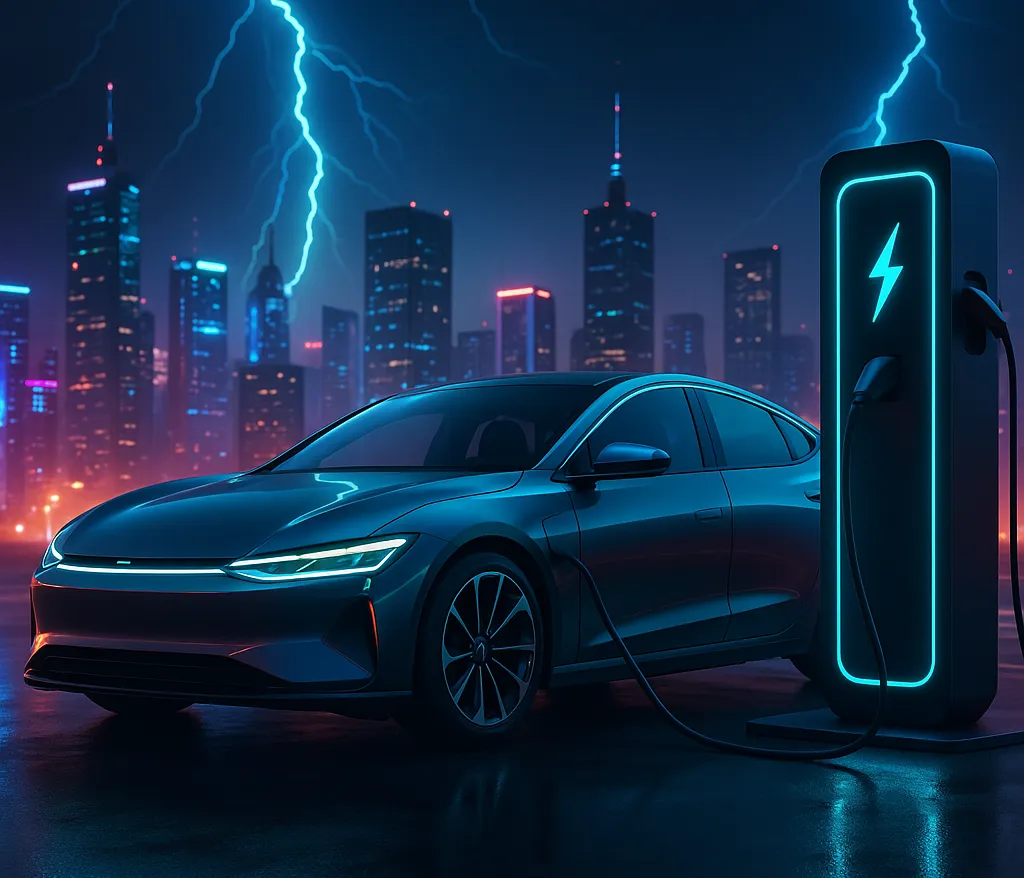Production of electric vehicles (EVs) is not merely experiencing growth; it is spearheading an industrial revolution that is reshaping the global automotive landscape. In 2024, approximately 17.1 million EVs were sold worldwide, marking a 25% increase over the previous year. Projections indicate that by 2029, the segment’s valuation will soar to USD 2.73 trillion, driven by a compound annual growth rate (CAGR) of over 15%. These figures demonstrate that EVs have transcended niche status to become the mainstream choice for millions of drivers seeking to reduce carbon emissions and fuel expenses.
China stands as the epicenter of both production and consumption, accounting for roughly 64% of global EV sales. The government’s robust subsidy programs, tax incentives, and strategic investments in charging infrastructure have fostered an environment in which market leaders such as BYD and SAIC flourish. The United States follows with sales exceeding 1.8 million units in 2024—a 50% jump year-on-year—where Tesla remains the vanguard of technological innovation, capturing over 13% of the world EV market. Despite Europe’s dense network of charging stations and established automakers, its growth has tempered lately due to reduced state subsidies. Russia, while still a modest market of around 14,000 EVs, has seen sales multiply nearly fivefold, buoyed by increased availability of Chinese brands.
Leading manufacturers—BYD, Tesla, Volkswagen, Geely, and SAIC—together controlled about one-third of the global market in 2023. BYD sold more than 2.9 million units, Tesla approximately 1.8 million, and Volkswagen, with its ID series, reinforced its presence in Europe and China. Geely expanded output through synergies with Volvo and joint ventures, and SAIC sustained growth via local partnerships with General Motors and Volkswagen.
Battery electric vehicles (BEVs) remain the dominant technology, yet plug-in hybrids (PHEVs) are gaining traction in regions where charging infrastructure remains sparse. Hydrogen fuel-cell vehicles (FCEVs) represent the fastest-growing segment by percentage growth, though their absolute market share is still small. Innovations such as vehicle-to-grid (V2G) systems, wireless charging pads, and next-generation solid-state batteries promise breakthroughs in energy storage density and recharge times.
Capital expenditure on EV production and battery manufacturing is expected to exceed USD 1.2 trillion through 2030. In 2022, venture funding for startups in EV design, software, and charging infrastructure reached USD 38.8 billion, with a projected CAGR of nearly 32%. Government incentives and dropping battery costs continue to accelerate the transition from internal combustion engines to electric propulsion.
Yet, the industry confronts critical challenges: end-of-life battery recycling, cobalt and lithium supply constraints, and ensuring ethical sourcing throughout the supply chain. Success will hinge on not only scaling production but also establishing a sustainable circular economy where raw materials are responsibly sourced and batteries are efficiently recycled.
The shift to electric mobility is more than a passing trend; it is essential for meeting national and international climate targets. Nations with the most ambitious EV support programs—Norway, China, and Ethiopia among them—are already posting record penetration rates. If current growth persists, EVs will redefine personal transportation by the mid-2030s, making it cleaner, smarter, and more cost-effective.
Production of electric vehicles (EVs) is not merely experiencing growth; it is spearheading an industrial revolution that is reshaping the global automotive landscape. In 2024, approximately 17.1 million EVs were sold worldwide, marking a 25% increase over the previous year. Projections indicate that by 2029, the segment’s valuation will soar to USD 2.73 trillion, driven by a compound annual growth rate (CAGR) of over 15%. These figures demonstrate that EVs have transcended niche status to become the mainstream choice for millions of drivers seeking to reduce carbon emissions and fuel expenses.
China stands as the epicenter of both production and consumption, accounting for roughly 64% of global EV sales. The government’s robust subsidy programs, tax incentives, and strategic investments in charging infrastructure have fostered an environment in which market leaders such as BYD and SAIC flourish. The United States follows with sales exceeding 1.8 million units in 2024—a 50% jump year-on-year—where Tesla remains the vanguard of technological innovation, capturing over 13% of the world EV market. Despite Europe’s dense network of charging stations and established automakers, its growth has tempered lately due to reduced state subsidies. Russia, while still a modest market of around 14,000 EVs, has seen sales multiply nearly fivefold, buoyed by increased availability of Chinese brands.
Leading manufacturers—BYD, Tesla, Volkswagen, Geely, and SAIC—together controlled about one-third of the global market in 2023. BYD sold more than 2.9 million units, Tesla approximately 1.8 million, and Volkswagen, with its ID series, reinforced its presence in Europe and China. Geely expanded output through synergies with Volvo and joint ventures, and SAIC sustained growth via local partnerships with General Motors and Volkswagen.
Battery electric vehicles (BEVs) remain the dominant technology, yet plug-in hybrids (PHEVs) are gaining traction in regions where charging infrastructure remains sparse. Hydrogen fuel-cell vehicles (FCEVs) represent the fastest-growing segment by percentage growth, though their absolute market share is still small. Innovations such as vehicle-to-grid (V2G) systems, wireless charging pads, and next-generation solid-state batteries promise breakthroughs in energy storage density and recharge times.
Capital expenditure on EV production and battery manufacturing is expected to exceed USD 1.2 trillion through 2030. In 2022, venture funding for startups in EV design, software, and charging infrastructure reached USD 38.8 billion, with a projected CAGR of nearly 32%. Government incentives and dropping battery costs continue to accelerate the transition from internal combustion engines to electric propulsion.
Yet, the industry confronts critical challenges: end-of-life battery recycling, cobalt and lithium supply constraints, and ensuring ethical sourcing throughout the supply chain. Success will hinge on not only scaling production but also establishing a sustainable circular economy where raw materials are responsibly sourced and batteries are efficiently recycled.
The shift to electric mobility is more than a passing trend; it is essential for meeting national and international climate targets. Nations with the most ambitious EV support programs—Norway, China, and Ethiopia among them—are already posting record penetration rates. If current growth persists, EVs will redefine personal transportation by the mid-2030s, making it cleaner, smarter, and more cost-effective.











